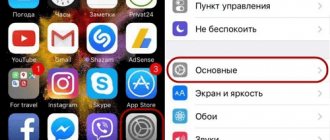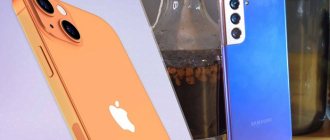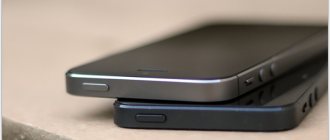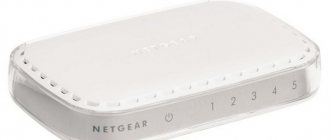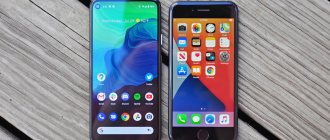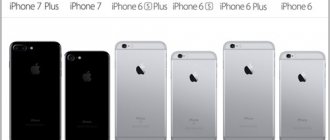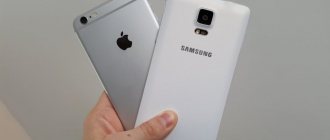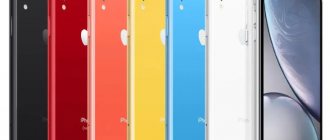The opposition between the iPhone and other smartphones is growing every year. There are adherents of both options, but there are also those who do not understand the essence of this struggle at all. Therefore, we will talk about the difference between iPhone and Android in its main manifestations.
But first, it’s worth saying that comparing Android and iPhone is incorrect. The first is the operating system on which most smartphones run, and the second is an apple smartphone that runs on the iOS operating system. But when many people say Android, they don’t mean the operating system, but any smartphone that runs on it. Therefore, we will compare android and ios, as well as the hardware running on these systems.
Differences
Basic features illustrating the difference between a smartphone and an iPhone come down to a short list:
- Openness. If the Android platform uses the freely distributed Linux kernel, then the iPhone uses a closed corporate version - OS X with UNIX components. This is where the following distinctions come from.
- Individual customization for the owner. The breadth of Android's capabilities contrasts with the rigid frames of the iPhone.
- Alternative app stores. Devices with Google OS allow other sites, but on the iPhone they are blocked.
- Safety. Due to the number of manufacturers, Android phones do not receive patches for software vulnerabilities. At the same time, Apple devices rarely encounter the problem of viruses, and updates are available on relatively older devices.
The market, divided between dominant platforms, dictates the need for constant work on software. Each side quickly increases advantages and eliminates disadvantages to gain consumer trust.
iOS users show greater satisfaction and commitment to their devices. The level of safety and prestige of the brand ensures a significant share of the business segment.
The owner of an Android device has the predominant application base at his disposal. The general availability of devices made it possible to obtain 85% of mobile equipment sales. Finding the answer to the question of which phone to buy, an iPhone, a smartphone or something else, is becoming a difficult task.
Quick comparison table
In conclusion, let’s once again go through the features of iPhone and Android smartphones to make it easier for you to make a choice.
| Android | iPhone |
| designer variety | monotonous design |
| variability of devices of the same model range in terms of performance, memory, external equipment | strictly defined filling, appearance and performance of models of the same series |
| 2 SIM cards | mostly 1 SIM card |
| variability of settings | limited settings |
| low security | closed system |
| free replacement of programs from the store | limited application replacement |
| support is irregular, after a couple of years noticeable malfunctions begin | support period up to 5 years, regular updates |
| Programs and options are updated separately | instant updates in the background |
| large amount of RAM | smaller but more efficient RAM |
| variety of models by price | only expensive models |
So far, iPhone and Android are on equal terms in the global market. The development of operating systems is parallel, competition is active. Therefore, when choosing, buyers are guided by their preferences. Some people need reliable virus protection and long-term support, while others need a smartphone with 2 SIM cards and the ability to download any applications.
Comparison of platforms
A close look at both options reveals properties that potential buyers consider.
Interface design
Both corporations have established certain rules that application developers follow.
For iOS it is:
- emphasis on content - the functions and content of programs are considered the main part, which is clearly emphasized by the white background, font and colors;
- clarity – to attract attention, the effects of transparency, blurring and shadow saturation are used;
- depth – the process of application operation is accompanied by the imposition of hierarchical levels, providing unmistakable orientation.
In the case of Android:
- realism – the introduction of naturalistic controls makes the programs intuitive to use;
- layering – the paper-thin structure of the applications concentrates attention on each individual page;
- interactivity – design components are not static decoration and are capable of interacting with the user.
Specific details that the eye focuses on when studying devices:
- "Home" or "Home" button. Android has 3 control functions - “Back”, “Home” and “Browse”, which helps to perform any action. The iPhone is familiar with one button – “Home”. iOS developers are building a back button into the apps themselves.
- Navigation panel. At the top of the screen, it contains the name or logo of the program, system information - network status, battery level, time. The iPhone displays this data evenly across the width; on Android, the icons are shifted to the left.
- Floating Action Button (FAB). Allows Google OS to clearly differentiate itself when compared to iOS. Represents a submenu collapsed into a red circle in the lower left corner of the screen. Contains your favorite application options. Apple’s analogue is a less functional “Call to Action”.
Build quality
The iPhone manufacturer is only one corporation that closely monitors the quality of parts. Among the manufacturers of Android smartphones is a list of companies, each with separate control standards. Products vary in size, weight, properties and reliability.
If you wish, you can easily notice which smartphone is better than the iPhone in terms of technical characteristics. However, there are not many such models and the differences are quite minor.
Android phones from the high price segment answer the question of which smartphone is as good as an iPhone in terms of quality of parts, but low-cost models may have problems. Problems also occur with the iPhone, but these devices are superior to the competing group in terms of quality.
Number of programs
The App Store contains fewer offers than Google Play. According to the situation in the spring of 2022, 2.1 million versus 3.5 is a significant difference. Although choice is not always the first factor.
Apple is famously strict when it comes to allowing applications into the corporate store, while Google's controls are much more relaxed. The restrictions placed on the App Store are sometimes considered too stringent. However, they prevent situations where an untested program causes harm to consumers.
Developing applications for different environments leads to increased costs for creators to adapt the product. Combined with Android's free app policy, the result is that developers don't cover the costs. The result is the debut of many products on iOS, with Android versions appearing later.
Camera
A category where it is difficult to draw a conclusion, but some details can be outlined. That's why, despite the previous superiority of iPhones, photos and videos taken by Android phones are gaining primacy, although they do not come off too far, as an expert may note.
In this case, we are talking only about advanced new products. Mid-range models will be much inferior to the iPhone in the ability to take pictures.
Applications that directly control cameras are convenient and fast in both cases. Ease of use and performance results favor iOS. The opponent gives a variety of options, which is sometimes appropriate, but in other cases it is unnecessary.
Speaking about the camera, which is better, a smartphone or an iPhone, according to user reviews, opinions lean towards the latter.
Performance
Taking as a basis models from among the range of available ones - the iPhone 6s and Samsung Galaxy Note 7, experts found that the Apple device easily beats the Samsung product in the speed test. The test consisted of opening several applications one by one, repeating the cycle twice.
The iPhone was able to complete the task in 1 minute 21 seconds, Note 7 spent 2 minutes 4 seconds. In terms of technical characteristics, the Samsung phone exceeds the specifications of its rival. Apple's superior performance is due to optimization.
However, another factor is the difference in development conditions - software manufacturers do not provide programs with the same operating conditions on different platforms.
Therefore, what is better than an iPhone or a smartphone, in the eyes of a technical specialist, is not so clear.
Price
The iPhone quality bar comes with a corresponding price bar. The newest model of this brand is about 50% more expensive than its closest competitors with Android OS. The situation changes depending on the time that has passed since the presentation of the devices, but the iPhone remains more expensive than its counterparts from the competing camp.
The situation is slightly different in the secondary market, but not by much. Buying a phone secondhand carries risks, so the final costs are even higher than when buying in a store.
The cost of Android devices is surprisingly affordable. The most unassuming Chinese models are orders of magnitude cheaper than the iPhone. Disadvantage - such a product breaks down faster or does not work correctly. But it can turn out to be quite good and meet the needs of the buyer.
It’s obvious how an iPhone differs from a smartphone and which one is better in terms of price.
Accessories
Owners of iPhones tend to purchase additional peripherals more often than owners of other phones. Apple has made sure that there is plenty to choose from - the number of accessories associated with their products is greater than that of any other device.
iPhone connectors make it more difficult to quickly find a charger to replace a broken one. The Android smartphone also complies with the Micro USB or USB-C standard, which makes it easier to connect with other technical devices.
Thanks to their origin from a single manufacturer, iPhones pair perfectly with their accessories. The same can be said for feature phones from major companies, whose smartphones are even slightly better than the iPhone. Less well-known manufacturers cannot receive such feedback.
What is better to choose: iPhone or other device
We found out how a regular smartphone differs from an iPhone. Users value iPhone for its build quality, stable interface, and recognizable design. If these criteria are important for the reader, we recommend choosing an Apple device.
In turn, smartphones from other manufacturers are more affordable. Often the difference in price for models with similar characteristics reaches 20-30 thousand rubles or even more. Therefore, if you don’t want to overpay for a brand, we recommend taking a smartphone from another company.
Who is the iPhone suitable for?
The potential owner meets the following criteria:
- A person for whom a mobile device has become an important part of business processes. Safety and reliability are at the forefront.
- A representative of a community where prestige plays a significant role. Everyday items should represent leading brands.
- People who prefer ease of use to any other advantages. The iPhone is well known for its ease of use, even for those who spend little time on technical innovations.
How iOS is translated and decrypted
Many people are wondering what “ios” means in English. The decoding of the abbreviation is simple - “i” indicates that it belongs to Apple products, like the iPhone and iPad. In turn, OS is Operating System, which can be translated as “operating system”. Another question that worries users is how to pronounce iOS? In fact, everything is simple, the word is read as “ayos”.
Much more important than writing are the functionality and differences from other popular operating systems, in particular Android.
Who is suitable for an Android smartphone?
Those users who value other features are more likely to choose devices with the Google operating system:
- Full control over device functions and memory contents. The owner of the phone has full access to file management and detailed settings.
- Expanded infrastructure. Compatibility with the absolute majority of electronic devices and quantitative dominance. This provides better information sharing and troubleshooting capabilities.
- Prices that provide a choice for any budget. An adequate balance between quality and cost is ensured by the attention of the buyer.
The current state of affairs indicates a balance between the market segments controlled by the two corporations. Each product has its own audience, and it is not easy to make them change their mind. For any individual user, there are a number of objective factors that determine the choice. Which phone is better, an iPhone or a smartphone depends on the needs of the owner.
How are they not different?
These leading platforms have more similarities than differences.
Signal quality
Some early Android devices and iPhones had problems with network signal loss. Since then, manufacturers have learned to avoid such troubles. Modern iPhones are no worse or better than Android phones in this regard.
Navigation capabilities
A special chip is responsible for stable communication with navigation satellites. The main manufacturers of GPS chips for portable devices are SiRF Technology Inc. and u-Blox AG (and lesser-known STMicroelectronics (STM), Texas Instruments, Mediatek Inc. (MTK), eRide, Nemerix and u-Nav Microelectronics). More than 90% of all equipment with GPS navigation operates on these chips.
Therefore, even the cheapest cell phones now have no problems with geolocation. It makes no sense to compare Android and iOS in this regard; everything works clearly both here and there.
Assembly
iPhones are not assembled in America, as everyone thinks, but in the Middle Kingdom and, more recently, in small volumes, in India. Manufacturers of Android devices are located in Asia, the bulk of them are also located in China, a smaller part in South Korea, Vietnam, and Malaysia.
Warranty service
Apple devices are known for their durability; performance remains almost unchanged throughout the life of Apple devices (with the exception of a few scandalous cases of artificially lowering performance).
Top Android devices also last quite a long time without any technical problems. But the above applies only to original phone models, and there is a risk of running into low-quality gray assemblies and outright fakes both here and there.
Apple's standard warranty is two years; on Android devices, especially in the cheaper price segment, the warranty period is often limited to one year.
Equipment
The standard equipment of devices with a green robot under the hood and Apple devices are also approximately the same. For example, the iPhone 11 kit includes:
- Lightning to USB Type C cable;
- USB power adapter 5 W (1 amp);
- wired EarPods with Lightning connector;
- SIM card ejector;
- documentation.
For comparison, the Samsung Galaxy A70 package includes:
- charger (fast charging 25 W);
- USB cable;
- wired stereo headset with USB connector;
- SIM tray clip;
- instructions.
Wireless charging support
Most of today's top-end smartphones support wireless charging. The pioneers in this regard were:
- iPhone 8;
- Xiaomi Mi Mix 2S;
- Huawei Mate 20 Pro;
- Samsung Galaxy S7.
How iOS came to be
Work on creating a new system for mobile devices was carried out by Apple long before the presentation of the first iPhone. To achieve a better result, S. Jobs instructed two competing groups to come up with their own versions of the operating platform. At the same time, one group was finalizing MacOSX, the second group was creating a fundamentally new program for the iPod player.
A group of developers who presented the first version of iOS for smartphones won the tough competition. Even then, the system had protection against loading other programs, but at the same time it did not support the execution of various tasks. Successive upgrades of the system have placed it on par with operating platforms for computers. The main advantage of iOS remains that all Apple devices run on it.
How to install the iOS operating system?
Installing this system on a mobile device will not be difficult even for an inexperienced user. But we should remember that the iOS system can only be installed on a phone or tablet developed by Apple.
Steps to install iOS on your phone or tablet:
- Data backup – if for some reason an error or failure occurs during the installation of the platform, your data will be saved only if you back up the data.
- We connect the gadget to a personal computer - you can install iOS on the device only using a PC on which the latest version of the special iTunes application is installed.
- Let's start installing the platform - in the open iTunes program you need to indicate the type and model of your gadget. After that, click the “Restore” button and specify the path to the system files.
Sources
- https://mirinfo.ru/ios/chto-takoe.html
- https://fans-android.com/ios-chto-eto-takoe/
- https://AppleTimes.ru/chto-takoe-ios-kak-polzovatsya-i-ee-osobennosti/
- https://iphone-gps.ru/iphone/kak-polzovatsya-iphone-dlya-novichkov
- https://AppleTimes.ru/ios-eto-chto-takoe/
- https://fulltienich.com/chto-takoe-ios/
- https://zen.yandex.ru/media/appleiwatch/obzor-ios-istoriia-sozdaniia-harakteristiki-pliusyminusy-5e8efa78e3a6ea6986dc0073
- https://AppleInsider.ru/ios/ios-14-vyshla-oficialno-chto-novogo-i-kak-ustanovit.html
- https://ipadinsider.ru/raznoe/operacionnaya-sistema-ios.html
freedom of choice
Apple, as already mentioned, likes to decide for the user. For this reason, the phones of this company are very limited. For example, you cannot download files from a browser, use torrents, record phone calls, transfer files directly from a computer, listen to music via Bluetooth, and so on.
In Android, this is all possible, and if some functions are missing (for example, the phone does not support two SIM cards), then you can always purchase another model. In the case of iOS, you are very limited. But this gives another advantage: stability and high optimization (read: speed). That is, there is no evil without good.
History and description of iOS
It is not known for certain when the development of the operating system began, but, apparently, it happened at least several years before the first iPhone was shown to the public. This show took place on January 9, 2007 at the MacWorld Expo. Then Steve Jobs personally introduced the company's first phone, called the iPhone, which ran iOS. It is noteworthy that at that time Apple did not provide a name for the operating system, and therefore company representatives said that “iPhone runs on an older version of OS X.” By the way, it was based on it. The official name of the platform appeared only a year later.
Let me remind you that the iPhone presented at that time captivated everyone. Today, when we watch presentations of new devices, little can impress us, but then there were simply no such serial devices and Apple formally had no competitors. The smartphone itself went on sale in the summer of 2007 and was received very warmly by the public. The first similar devices on the Android OS appeared much later, so Apple can safely be called a pioneer or even the creator of a new era.
iOS is often criticized, and for good reason. Yes, this is a closed platform. On the one hand, this is good, because a properly configured system guarantees high speed, responsiveness and no problems with launching applications. On the other hand, the user cannot customize the device “for himself”. There are other difficulties as well. For example, in earlier versions of the operating system it was impossible to send several types of files by mail - you must create several letters. Another point is that you cannot install applications not from the App Store (branded application store). To do this you have to install the Cydia application.
The second significant problem is the connection of the device to the iTunes media combiner. Yes, an ordinary user without it will not be able to download music, videos or any other file to the device. This means that for many manipulations you will need a computer with iTunes installed. Of course, this problem can be circumvented, but you will have to perform a number of certain actions, which the vast majority of iOS device users prefer not to bother with.
Assistants
If we talk about smart assistants, then we have to give laurels to Google and its Google Assistant. This thing uses all of Google's knowledge, as well as the information it has collected about you, to make your life easier.
For example, if you have a meeting marked in Google Calendar for half past seven, and Google knows that traffic is terrible, it will send you a notification advising you to send early. iOS has Siri, but in terms of advancedness it is still far from Google Assistant, although the latter is also available for iPhones.
IOS management
Control in IOS is implemented based on manipulations using touches, multi-touch gestures and swipes. The controls consist of various sliders, switches, and buttons. You need to interact with them using finger touches and gestures on the device’s touch screen. Such interaction triggers certain functions in the OS, this can be: launching applications and other software, swiping, compressing, zooming and other actions.
The operating system is also configured to interact with the modules that are on the device, for example, the iPhone has an accelerometer - it is used by some applications and the system itself to respond to the position of the phone in space, its shaking, rotation, etc. Shaking, for example, is a signal to cancel a certain action.
Apple received a lot of praise for additional features that allow people with disabilities to use the OS.
Games
In the near future, iPhones may become the second Nintendo or PS Vita.
All this thanks to the huge range of games that the App Store boasts. Android users are very spoiled creatures and are sometimes accustomed to the fact that everything should be free. It is for this reason that many large game developers prefer to create for the App Store, bypassing Google.
A little history
In 2005, Steve Jobs began planning the iPhone and was faced with the need to develop a new mobile operating system. Mac OS was used as a basis, which enabled many developers on this OS to quickly get used to the new one. They called it iPhone OS.
The OS was released with the first iPhone in June 2007. It didn't initially support apps, but Apple announced that same year that it was developing a software development kit for it, the SDK. In March 2008 they announced the iPhone SDK.
In July 2008, the App Store launched with just 500 apps available. It began to grow rapidly, and by September there were already 3,000 applications, and by July 2009 there were already 15,000. At the moment there are already about 2 million and new ones are constantly being added.
In June 2010, Apple renamed iPhone OS to iOS. In October 2016, the company opened an IOS developer academy in Naples, which anyone can still enroll in.
Battery
If we talk about batteries, then everything will be a little simpler for the iPhone. We have only a few models, while Android has devices with a wide variety of screen proportions and hardware.
Accordingly, they hold the charge differently, and the sizes of the batteries themselves are also different. So Android definitely wins here.

